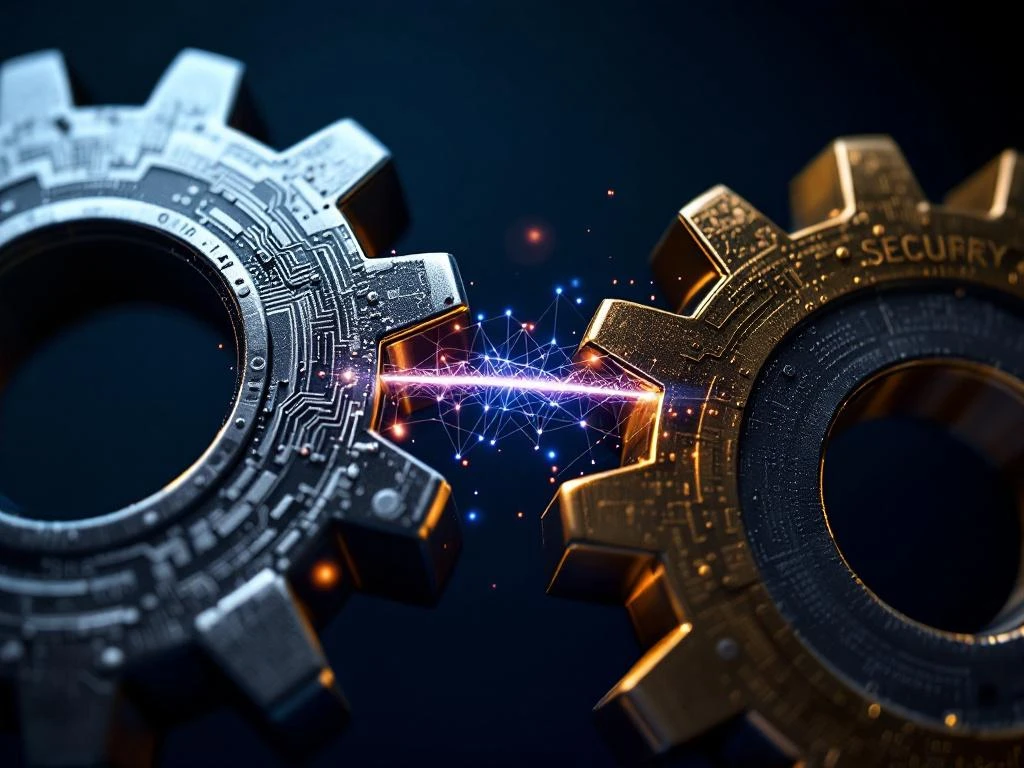

-
UK: +44 203 8876 770
US: 315 508 6500 - cybersecurity@thisisiceberg.com
-
8 Devonshire Square, London, EC2M 4YJ

AI-enhanced cyberattacks are fundamentally changing how organisations approach cybersecurity hiring. Traditional security teams struggle to keep pace with attacks that adapt in real-time, learn from defensive measures, and operate with unprecedented sophistication. These threats demand a new generation of security professionals who understand both artificial intelligence and cybersecurity at a deep technical level.
The shift isn’t just about adding AI knowledge to existing teams. It requires rethinking how we evaluate talent, what skills matter most, and how to build resilient security organisations. This guide explains exactly what’s changing in the threat landscape and how to adapt your hiring strategy accordingly.
Artificial intelligence has given attackers capabilities that were impossible just a few years ago. Machine learning algorithms now automate vulnerability discovery, scanning millions of potential targets and identifying weaknesses faster than human security teams can patch them.
Modern AI-powered attacks demonstrate several key characteristics:
AI-powered attacks operate continuously without human intervention. They create persistent threats that traditional security measures struggle to counter effectively, making business email compromise and fraud schemes significantly more effective.
Most cybersecurity professionals learned their skills when attacks followed predictable patterns. They understand signature-based detection, rule-based systems, and manual threat hunting techniques. These approaches become less effective against AI-powered threats that constantly evolve their behaviour.
| Traditional Security Approach | AI Threat Challenge |
|---|---|
| Signature-based detection | Threats modify behaviour in real-time |
| Manual threat hunting | Volume overwhelms human analysis |
| Rule-based systems | Adaptive attacks exploit static rules |
| Known attack vector focus | Novel patterns generated by ML systems |
Current training programmes focus heavily on known attack vectors and established defence methodologies. Security teams excel at responding to familiar threats but struggle when faced with novel attack patterns generated by machine learning systems.
Traditional security tools weren’t designed for adaptive threats. The speed mismatch creates fundamental problems – human analysts need time to investigate alerts while AI-enhanced attacks move faster than traditional incident response processes can handle.
Many security teams also lack the mathematical and statistical background needed to understand how machine learning attacks operate, creating blind spots that AI-powered attacks readily exploit.
Reading about AI-enhanced cyberattacks? Many hiring managers are discovering their current security teams aren't equipped for these evolving threats. What's driving your interest in this topic?
Effective AI threat defence requires a blend of traditional cybersecurity knowledge and modern data science capabilities. Security professionals need to understand how machine learning algorithms work with enough depth to recognise their application in attack scenarios.
Essential skills for modern cybersecurity professionals include:
Threat hunting evolves from reactive investigation to proactive pattern recognition. Modern security professionals must distinguish between normal variations and genuine indicators of compromise, especially when dealing with attacks that gradually modify their signatures.
Evaluating candidates for AI threat defence requires different interview techniques and assessment methods. Traditional cybersecurity questions about network protocols and incident response remain relevant but need supplementing with scenarios that test analytical thinking and adaptability.
Key evaluation criteria for AI-ready security professionals:
| Assessment Area | Evaluation Method | Success Indicators |
|---|---|---|
| Novel problem solving | Present unfamiliar attack scenarios | Systematic thinking and reasonable investigation approaches |
| Statistical understanding | Practical data analysis examples | Clear explanation of complex concepts and analytical limitations |
| Technical skills | Hands-on tool demonstrations | Practical experience over theoretical knowledge |
| Learning agility | Discussion of recent developments | Current knowledge and impact assessment abilities |
Assess hands-on experience with data analysis tools and programming languages. Look for evidence of cross-functional collaboration and consider their approach to continuous learning, as the AI threat landscape evolves rapidly.
Effective evaluation techniques help identify candidates who embrace learning opportunities and adapt their skills as threats evolve.
Successful AI threat defence requires teams with complementary skills rather than individuals who excel in all areas. Combine deep technical specialists with analysts who understand business context and communication specialists who can translate technical findings into actionable recommendations.
Framework for building resilient security teams:
Design team structures that support rapid response to new threats. Measure team effectiveness based on adaptability and learning speed rather than just incident resolution metrics.
Teams that quickly master new defensive techniques and successfully counter novel attacks provide more value than those that excel only at handling familiar threats.
The evolution of AI-enhanced cyberattacks demands a fundamental shift in how we approach cybersecurity hiring and team building. Success requires professionals who combine traditional security expertise with modern analytical capabilities, supported by organisational structures that promote continuous learning and adaptation. At Iceberg, we understand these changing requirements and help organisations identify the AI-ready security talent needed to defend against tomorrow’s threats.
If you are interested in learning more, reach out to our team of experts today.













